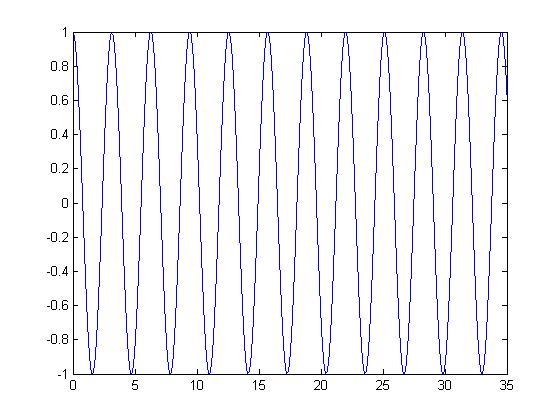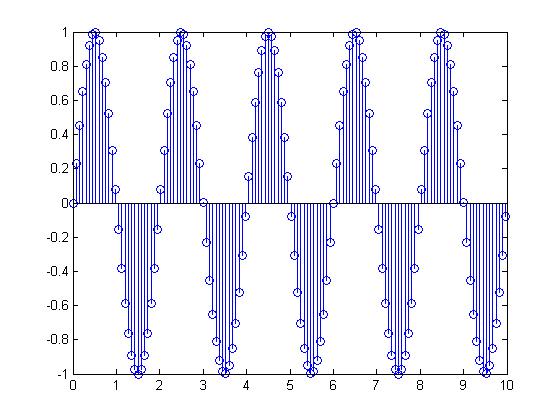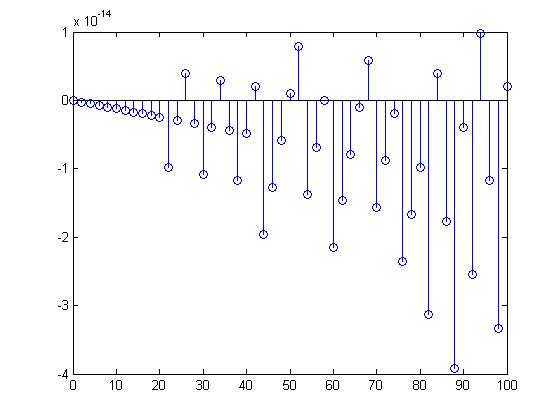| (2 intermediate revisions by the same user not shown) | |||
| Line 1: | Line 1: | ||
| − | This is a sine function of period 2. Function is sin(pi*t). Continuous Signal. | + | 1.This is a sine function of period 2. Function is sin(pi*t). Continuous Signal. |
| Line 10: | Line 10: | ||
| − | '''Periodic DT Signal'''This is the discrete signal of the same function with sampling time of 0.075. I got the diagram on mat lab using the command STEM. This is periodic. | + | 2. '''Periodic DT Signal'''This is the discrete signal of the same function in 1 with sampling time of 0.075. I got the diagram on mat lab using the command STEM. This is periodic. |
[[Image:jayanth1_ECE301Fall2008mboutin.jpg]] | [[Image:jayanth1_ECE301Fall2008mboutin.jpg]] | ||
| + | |||
| + | |||
| + | '''Non-Periodic DT Signal''' This is the non periodic DT signal of the same function in 1 with sampling time of 2. Diagram was obtained using Matlab. | ||
| + | |||
| + | |||
| + | |||
| + | [[Image:jayanth 2_ECE301Fall2008mboutin.jpg]] | ||
Latest revision as of 09:23, 12 September 2008
1.This is a sine function of period 2. Function is sin(pi*t). Continuous Signal.
2. Periodic DT SignalThis is the discrete signal of the same function in 1 with sampling time of 0.075. I got the diagram on mat lab using the command STEM. This is periodic.
Non-Periodic DT Signal This is the non periodic DT signal of the same function in 1 with sampling time of 2. Diagram was obtained using Matlab.




